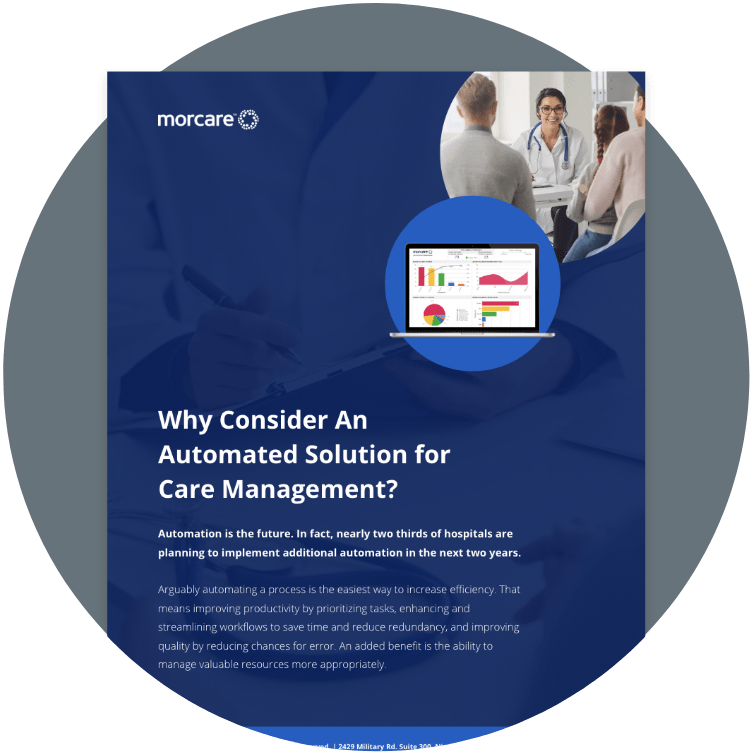Value-based care is transforming the healthcare industry and the way that patients approach treatment decisions. By focusing on patient outcomes and satisfaction, rather than the quantity of services provided, healthcare organizations can make a greater contribution to public health.
The role of data in effective healthcare cannot be overstated. Data is a constant force in shaping healthcare trends and influencing providers’ decision-making. However, there’s a wide gap between organizations that wait for data to trickle down versus those that proactively gather, analyze, and act on data. Organizations and providers who take a proactive data-driven approach to management and care achieve streamlined processes and improved patient care outcomes.
In the sections below, we’ll discuss the why and the how of a data-driven approach to healthcare management and patient care.
The Power of Data Analysis in Healthcare
In recent years, there’s been an increased focus in the healthcare industry on what’s known as “big data.” This phrase refers to enormous data sets that can’t be easily analyzed with basic methods or technologies. Big data is hard to work with, but it’s powerful, representing a large-scale collection of granular information.
Using modern software solutions, it’s now easier than ever before to work with big data. Healthcare leaders have more access to sophisticated data sets that shed light on everything from how diseases move through populations to which benefits package is most enticing to new hires.
When properly harnessed and interpreted, data analysis is a transformative tool that can enhance operational efficiency, reduce safety risks, and improve financial performance. Most importantly, data analysis helps providers maintain the highest possible patient care standards.
Patient Care Management and Data Analysis
Patient care management involves coordinating and overseeing a patient’s overall healthcare experience. A patient’s care management team may include a number of different professionals from multiple departments or organizations working together.
By incorporating data analysis into decision-making, care providers can maintain a focused, unified approach. Providers use data to continuously choose the most evidence-based course of action, thus streamlining coordination and reducing redundancies.
Disease Management Through Actionable Data
Disease management—tracking and treating chronic diseases systematically—benefits from the availability of big data that reveals disease trends. These days, there’s an incredible amount of information available regarding the prevalence of diseases in populations and the likely outcomes of health conditions. Healthcare leaders use this data to identify at-risk groups, predict disease outcomes, and apply preventive measures efficiently.
Data and Quality Management
In healthcare, quality management is the administration of services that are efficient, consistent, and patient-centered. A data-driven approach that emphasizes empirical evidence helps to continuously improve quality management. Robust data collection reveals patterns, showing what works and what needs improvement. Staying tuned in to data helps healthcare managers to create feedback loops for continuous improvement.
Prioritizing Patient Safety with Data
Patient safety is paramount in healthcare. Safety involves protection against medical errors, assurance of proper care decisions, and the guarantee of a high quality of care standard. Since an alarming landmark 1999 study estimated that 98,000 Americans die annually due to medical errors, there’s been an industry-wide push to improve patient safety. Thankfully, in recent years, patient harm events have sharply declined. This good news highlights the modern emphasis on making every effort to improve patient safety. However, stricter safety standards also mean that every adverse incident now stands out more than ever.
To enhance patient safety, data-driven healthcare teams work on identifying patterns in the occurrence of adverse events. This enables proactive interventions and safer patient management.
Risk Management in a Data-Driven Era
Risk management for healthcare organizations should involve the following steps:
- Identifying adverse events that may occur; then
- Assessing the risk factor of those events; then
- Taking steps to reduce the likelihood or the severity of those adverse events
Analysis of big data reveals risks that might otherwise remain hidden. These include risks related to patient care strategies as well as organization-level challenges. Predictive analysis of large data sets can both save lives and help a healthcare organization operate more effectively.
Get Better Data-Driven Care Management for Your Healthcare Organization
At MorCare, we help ambitious healthcare leaders achieve a modern, sophisticated approach to data-driven care management. Our software solutions are customizable, user-centric, and impactful.
Contact MorCare today to discuss an innovative healthcare management software solution for your organization.

